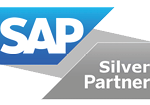The SAP ecosystem sits at the heart of digital human resources transformation, influencing the way organizations recruit, develop and retain talent. With the steady integration of AI-driven tools and cloud-based solutions, businesses striving for growth are closely tracking the anticipated evolution of HR technology within SAP. This blog discusses the key HR technology trends shaping the SAP ecosystem and how companies can stay ahead. As 2025 approaches, several emerging trends, such as the rise of SAP SuccessFactors, increasing demand for global compliance automation and a stronger focus on employee experience, are redefining standards and practices for HR leaders across industries.
HR Technology Innovation: The New Standard for SAP Ecosystems
The rapid adoption of advanced HR technology is transforming operations for businesses of every size within the SAP ecosystem. Through integrated cloud solutions, organizations are streamlining administrative processes, reducing manual workload and delivering real-time data to support strategic decision making. In 2025, this convergence of technology and HR strategy is accelerating higher efficiency and new opportunities. Solutions powered by artificial intelligence automate repetitive HR tasks, flag compliance risks and empower more nuanced insights through predictive analytics. The seamless integration of these HR technology platforms with SAP SuccessFactors brings build-in intelligence to daily operations, enabling HR teams to allocate resources more effectively and focus on long-term priorities, such as workforce planning and organizational growth.
SAP SuccessFactors: Transforming Talent Acquisition and Management
SAP SuccessFactors stands out as a driver for smarter talent management, introducing data-driven methods to shape each stage of the employee life cycle. Intelligent algorithms enable HR leaders to match candidates with open positions, evaluate potential and measure performance based on role specific benchmarks. These capabilities go beyond recruitment, impacting learning and development through personalized career path suggestions that align workforce skills with organization wide objectives. By leveraging SAP SuccessFactors, organizations are exploring more sophisticated workforce planning models that reduce costs and improve overall HR outcomes. Automation within the system detects patterns in employee attrition, suggests targeted retention strategies and provides managers with timely feedback, contributing to reduced turnover and higher engagement rates across departments.
Global Compliance Automation: Staying Ahead of Regulatory Changes
Keeping pace with global labor laws and regulatory shifts remains a significant challenge for companies with international workforces. In 2025, global compliance automation in SAP is rapidly gaining prominence as a critical differentiator. Automated compliance tools embedded within HR technology are minimizing risks and ensuring accuracy in reporting, no matter the country or region. Real-time updates help HR departments implement policy changes, manage tax requirements and navigate labor contracts with unprecedented precision. With global compliance automation, organizations can proactively address legal obligations, streamline audits and avoid costly penalties. This new level of adaptability not only preserves a company’s reputation but also creates an environment of trust for both employees and stakeholders, as international expansion continues to increase.
Elevating Employee Experience with Intelligent HR Technology
Employee experience sits at the core of HR transformation and businesses are now investing in digital tools that redefine the way people interact with their workplace. Through AI-powered self-service portals, chatbots and personalized learning resources, HR technology solutions within SAP are placing employees in control of their own professional journey. By facilitating easy access to benefits, pay information and training opportunities, these platforms reduce friction and boost engagement. In 2025, the focus on employee experience will extend beyond administrative efficiency. HR leaders will utilize insights from SAP SuccessFactors AI to detect patterns in workforce sentiment, measure the impact of company initiatives and tailor wellness programs that resonate with diverse employee needs. Prioritizing employee experience in this way enhances retention and promotes a culture that attracts high performing talent.
Integrating SAP SuccessFactors and HR Technology for Workforce Agility
Integrating advanced HR technology and SAP SuccessFactors is enabling companies to create agile environments where teams can quickly adapt to business demands. Automation of traditional HR workflows, such as onboarding, performance management and time tracking, not only reduces manual input but also produces more reliable data across operations. This data centric approach supports ongoing workforce development through targeted learning recommendations and transparent skills assessments. The synergy of SAP SuccessFactors with robust HR technology enables real-time performance monitoring, ensuring that HR leaders can make informed decisions in periods of uncertainty or rapid change. As the structure of work continues to become more distributed and flexible, the combination of these technologies will empower companies to navigate challenges and seize new opportunities.
Workforce Analytics and Data-Driven Decision Making
Analytics will remain indispensable for HR departments capitalizing on SAP HR trends in 2025. Integrated reporting tools and dashboards allow HR professionals to track performance metrics, diversity goals and turnover rates with precision. AI-driven analytics surface granular insights by sifting through large volumes of SAP SuccessFactors data to identify trends and forecast risks. These analytical engines support workforce scheduling, succession planning and salary benchmarking, making decisions based on concrete evidence rather than intuition. By connecting workforce analytics with HR technology systems and compliance automation, leaders have the ability to visualize organizational health holistically. This not only sharpens day-to-day processes but also shapes future oriented strategies aligned to corporate objectives.
Globalization, Local Expertise and SAP HR Trends 2025
The SAP HR landscape in 2025 is heavily influenced by the needs of multinational businesses. As organizations expand into new territories, balancing standardization with local requirements is essential. Advanced HR technology and global compliance automation play an integral role in supporting this balance, offering localization features for payroll, benefits administration and regulatory paperwork. AI-powered language processing and customizable workflows enable HR teams to manage cross border assignments effectively and ensure country specific compliance. The synergy between SAP SuccessFactors and global compliance solutions enables businesses to act with agility without sacrificing legal accuracy. Enterprises adopting these tools are better able to respond to regional talent challenges, secure top talent across borders and future proof their operations against shifting global demands.
Modern HR platforms operating within the SAP ecosystem are placing greater emphasis on sustainable talent development. Companies are leveraging HR technology and SAP SuccessFactors to identify internal mobility opportunities, create tailored upskilling programs and support career progression. Proactive workforce planning, supported by predictive analytics and employee experience insights, allows organizations to retain top talent while maintaining adaptability for future challenges. Custom career pathing and on-demand learning modules are now integrated into daily workflows, reflecting an ongoing commitment to employee success. This focus strengthens organizational resilience, positions businesses to address skills shortages more effectively and supports strategic growth objectives over the long term.




